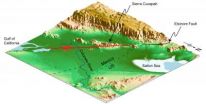(Press-News.org) BOULDER—Although Arctic sea ice appears fated to melt as the climate continues to warm, the ice may temporarily stabilize or somewhat expand at times over the next few decades, new research indicates.
The computer modeling study, by scientists at the National Center for Atmospheric Research, reinforces previous findings by other research teams that the level of Arctic sea ice loss observed in recent decades cannot be explained by natural causes alone, and that the ice will eventually disappear during summer if climate change continues.
But in an unexpected new result, the NCAR research team found that Arctic ice under current climate conditions is as likely to expand as it is to contract for periods of up to about a decade.
"One of the results that surprised us all was the number of computer simulations that indicated a temporary halt to the loss of the ice," says NCAR scientist Jennifer Kay, the lead author. "The computer simulations suggest that we could see a 10-year period of stable ice or even an increase in the extent of the ice. Even though the observed ice loss has accelerated over the last decade, the fate of sea ice over the next decade depends not only on human activity but also on climate variability that cannot be predicted."
Kay explains that variations in atmospheric conditions such as wind patterns could, for example, temporarily halt the sea ice loss. Still, the ultimate fate of the ice in a warming world is clear.
"When you start looking at longer-term trends, 50 or 60 years, there's no escaping the loss of ice in the summer," Kay says.
Kay and her colleagues also ran computer simulations to answer a fundamental question: why did Arctic sea ice melt far more rapidly in the late 20th century than projected by computer models? By analyzing multiple realizations of the 20th century from a single climate model, they attribute approximately half the observed decline to human emissions of greenhouse gases, and the other half to climate variability.
These findings point to climate change and variability working together equally to accelerate the observed sea ice loss during the late 20th century.
The study appears this week in Geophysical Research Letters. It was funded by the National Science Foundation, NCAR's sponsor.
Rapid melt
Since accurate satellite measurements became available in 1979, the extent of summertime Arctic sea ice has shrunk by about one third. The ice returns each winter, but the extent shrank to a record low in September 2007 and is again extremely low this year, already setting a monthly record low for July. Whereas scientists warned just a few years ago that the Arctic could lose its summertime ice cover by the end of the century, some research has indicated that Arctic summers could be largely ice-free within the next several decades.
To simulate what is happening with the ice, the NCAR team used a newly updated version of one of the world's most powerful computer climate models. The software, known as the Community Climate System Model, was developed at NCAR in collaboration with scientists at multiple organizations and with funding by NSF and the Department of Energy.
The research team first evaluated whether the model was a credible tool for the study. By comparing the computer results with Arctic observations, they verified that, though the model has certain biases, it can capture observed late 20th century sea ice trends and the observed thickness and seasonal variations in the extent of the ice.
Kay and her colleagues then conducted a series of future simulations that looked at how Arctic sea ice was affected both by natural conditions and by the increased level of greenhouse gases in the atmosphere. The computer studies indicated that the year-to-year and decade-to-decade trends in the extent of sea ice are likely to fluctuate increasingly as temperatures warm and the ice thins.
"Over periods up to a decade, both positive and negative trends become more pronounced in a warming world," says NCAR scientist Marika Holland, a co-author of the study.
The simulations also indicated that Arctic sea ice is equally likely to expand or contract over short time periods under the climate conditions of the late 20th and early 21st century.
Although the Community Climate System Model simulations provide new insights, the paper cautions that more modeling studies and longer-term observations are needed to better understand the impacts of climate change and weather variability on Arctic ice.
The authors note that it is also difficult to disentangle the variability of weather systems and sea ice patterns from the ongoing impacts of human emissions of greenhouse gases.
"The changing Arctic climate is complicating matters," Kay says. "We can't measure natural variability now because, when temperatures warm and the ice thins, the ice variability changes and is not entirely natural."
The University Corporation for Atmospheric Research manages the National Center for Atmospheric Research under sponsorship by the National Science Foundation. Any opinions, findings and conclusions, or recommendations expressed in this publication are those of the author(s) and do not necessarily reflect the views of the National Science Foundation.
###
END
The sex hormone oestrogen could help protect women from cardiovascular disease by keeping the body's immune system in check, new research from Queen Mary, University of London has revealed.
The study has shown that the female sex hormone works on white blood cells to stop them from sticking to the insides of blood vessels, a process which can lead to dangerous blockages.
The results could help explain why cardiovascular disease rates tend to be higher in men and why they soar in women after the menopause.
The researchers compared white blood cells from men and pre-menopausal ...
Astronomers have discovered the darkest known exoplanet - a distant, Jupiter-sized gas giant known as TrES-2b. Their measurements show that TrES-2b reflects less than one percent of the sunlight falling on it, making it blacker than coal or any planet or moon in our solar system.
"TrES-2b is considerably less reflective than black acrylic paint, so it's truly an alien world," said astronomer David Kipping of the Harvard-Smithsonian Center for Astrophysics (CfA), lead author on the paper reporting the research.
In our solar system, Jupiter is swathed in bright clouds ...
When a research team asked cocaine addicts to choose, hypothetically, between money now or cocaine of greater value later, "preference was almost exclusively for the money now," said Warren K., Bickel, professor in the Virginia Tech Carilion Research Institute, director of the Advanced Recovery Research Center, and professor of psychology in the College of Science at Virginia Tech. This result is significantly different from previous studies where a subject chooses between some money now or more money later.
Hollywood portrays cocaine addicts as people who will do anything ...
The work of molecular biologist Joseph M. Miano, Ph.D., and clinician Craig Benson, M.D., seems worlds apart: Miano helps head the Aab Cardiovascular Research Institute and Benson is chief resident of the combined Internal Medicine and Pediatrics program at the University of Rochester Medical Center. Though the chance of their professional paths crossing was highly unlikely, shared enthusiasm, intense curiosity and a little detective work led to a unique collaboration and important new insights on the inner workings of the human genome.
Together, Miano and Benson created ...
Critical Information Network (CiNet), LLC, announces the release of its newly updated Electrical 1 training series designed to help companies improve the electrical maintenance practices of workers and meet the demands of today's busy training manager.
According to OSHA and the National Fire Protection Association (NFPA), electrical accidents and the resulting fires cause millions of dollars in damages, countless injuries and life threatening workplace events every year. The tragedy is that many of these could have been avoided by simple maintenance repairs supported ...
(WASHINGTON, August 11, 2011) – According to a study published in Blood, the Journal of the American Society of Hematology (ASH), researchers have reported that administration of granulocyte colony-stimulating factor (G-CSF), a drug that releases stem cells from the bone marrow into the blood, is unlikely to put healthy stem cell donors at risk for later development of abnormalities involving loss or gains of chromosomes that have been linked to hematologic disorders such as myelodysplastic syndromes (MDS) and acute myeloid leukemia (AML).
G-CSF therapy is given to healthy ...
While many Britons enjoyed the recent heatwave, taking the chance to lie back and top up their tans, for others it only served to heighten their fears of damp armpits and clammy hands.
As a result, Transform Cosmetic Surgery Group recorded a 45% surge in enquiries into use of BOTOX injections a treatment for excessive sweating over a three-day period of the heatwave as the nation become more perspiration-conscious.
Known as hyperhidrosis, the condition sees sweat glands become overactive, something often made worse during periods of hot weather. During the procedure, ...
By isolating cells from patients' spinal tissue within a few days after death, researchers funded by the National Institutes of Health have developed a new model of the paralyzing disease amyotrophic lateral sclerosis (ALS). They found that during the disease, cells called astrocytes become toxic to nerve cells – a result previously found in animal models but not in humans. The new model could be used to investigate many more questions about ALS, also known as Lou Gehrig's disease.
ALS can run in families, but in the majority of cases, it is sporadic, with no known ...
(Santa Barbara, Calif.) –– Viruses fill the ocean and have a significant effect on ocean biology, specifically marine microbiology, according to a professor of biology at UC Santa Barbara and his collaborators.
Craig A. Carlson, professor with UCSB's Department of Ecology, Evolution, and Marine Biology, is the senior author of a study of marine viruses published this week by the International Society for Microbial Ecology Journal, of the Nature Publishing Group.
The new findings, resulting from a decade of research, reveal striking recurring patterns of marine virioplankton ...
PASADENA, Calif.— Like scars that remain on the skin long after a wound has healed, earthquake fault lines can be traced on Earth's surface long after their initial rupture. Typically, this line of intersection between the area where the fault slips and the ground is more complicated at the surface than at depth. But a new study of the April 4, 2010, El Mayor–Cucapah earthquake in Mexico reveals a reversal of this trend. While the fault involved in the event appeared to be superficially straight, the fault zone is warped and complicated at depth.
The study—led by researchers ...


